According provided by lens (option 'D', for Nikon cameras) huge thanks to the store www.fotika.com.uawhere you can find a huge number of different used photographic equipment, including similar lenses.
- In short
- History like lenses
- Main Specifications
- Assembly
- 'Lock' switch
- Focusing
- Image quality
- Sample Photos
- My personal experience with the lens
- Prices
- Results
- User Comments
- Add your review or question on the lens
In short
The Sigma 50-500mm 1: 4-6.3D HSM EX APO is an old super telephoto zoom lens with auto focus. This is a very interesting lens - it has a record 10x zoom, with the ability to reach up to 500mm focal length, low cost and not the worst image quality. Do you expect the Sigma 50-500mm 1: 4-6.3D HSM EX APO with this zoom ratio to produce a solid soft Sigma image? But no! Although the picture from this lens cannot compete with the native lenses of the 200-400 / 4 class, it cannot be said that the lens is bad.
History like lenses
Sigma produces and produces a huge number of telephoto lenses. The family of such super telephoto zoom Sigma lenses (with focal lengths greater than 300 mm) consists of the following models:
- Sigma 170-500mm 1: 5-6.3 APO
- Sigma 170-500mm 1: 5-6.3 APO DG
- Sigma 150-500mm F5-6.3 APO HSM OS
- Sigma 150-600mm F5-6.3 DG OS HSM C
- Sigma 150-600mm F5-6.3 DG OS HSM S
- Sigma 50-500mm 1: 4-6.3 HSM EX APO, the model is shown in this review.
- Sigma 50-500mm 1: 4-6.3 HSM DG EX APO
- Sigma 50-500mm 1: 4.5-6.3 DG APO HSM OS
- Sigma 80-400mm 1: 4.5-5.6 EX DG OS
- Sigma 100-400mm f / 5-6.3 DG HSM OS C
- Sigma 120-400 1: 4.5-5.6 APO DG HSM
- Sigma 135-400 1: 4.5-5.6 APO
- Sigma 135-400 1: 4.5-5.6 APO DG
- Sigma 120-400 1: 4.5-5.6 APO DG OS HSM
- Sigma 300-800mm 1: 5.6 APO EX DG
- Sigma 200-500mm 1: 2.8 APO EX DG - wait oh shi-
There are also subversions from this list. For example, there are Sigma 50-500mm 1: 4-6.3 lensesD HSM EX APO (from this review) and Sigma 50-500mm 1: 4-6.3 HSM EX APO. Most likely the letter 'D' for Nikon, Pentax, Sony cameras means the ability to transfer the focusing distance to the camera. Canon versions were not labeled with this letter. Since Sigma is very fond of releasing a million versions and sub-versions of its lenses, there is a chance that the variety of the lineup is much more than I indicated in the list above.
Only in 2015, Nikon introduced its first autofocus zoom lens, which was able to reach 500 mm focal length (we are talking about Nikon AF-S Nikkor 200-500mm 1: 5.6E ED VR). But Sigma has been making its super-telephoto zooms since 1996 (the first of them is Sigma 170-500mm 1: 5-6.3D APO).
Main technical characteristics of Sigma 50-500mm 1: 4-6.3D HSM EX APO:
| Review Instance Name | Sigma 50-500mm 1: 4-6.3D HSM EX APO 2008763, version with Nikon F mount |
| Basic properties |
|
| Front Filter Diameter | 86 mm |
| Focal length | 50-500 mm EGF for Nikon DX cameras is 75-750 mm |
| Zoom ratio | 10 X (Sigma - well done!) |
| Designed by | for Nikon film cameras (at the same time, this model was also available for Sigma, Canon, Pentax, Konica Minolta / Sony cameras) |
| Number of aperture blades | 9 straight petals |
| Tags | focusing distance in meters and feet, focal lengths for 50, 100, 200, 300, 400, 500 mm, marks for aperture values F / 4, 5,6, 8, 11, 16, 22 (without intermediate values). 3 marks for quick installation of the tripod foot in vertical or horizontal position. Remove mark to remove the tripod foot. There is a red dot on the side of the mount for quick installation of the lens in the mount of the camera. Focal length limiter and focal length lock. |
| Diaphragm | 50 mm from F / 4 to F / 22. At 500 mm from F / 6.3 to F / 32, the lens has an aperture control ring (Non-G - lens type)
Maximum values of F depending on the focal length:
|
| MDF (minimum focusing distance) | 1 m, the maximum magnification ratio is 1: 5.2 and 200 mm of focal length is available (for more information, see Focusing) |
| The weight | 1842 g |
| Optical design | 20 elements in 16 groups. The circuit includes 4 low dispersion element SIGMA SLD (shown in blue on the optical diagram).
The optical design is the same as the subsequent model. Sigma 50-500mm 1: 4-6.3 HSM DG EX APO. |
| Lens hood | Bayonet type |
| Manufacturer country | LENS MADE IN JAPAN (Japan) |
| Period | From about 2000 to 2005, it was later replaced by a version Sigma 50-500mm 1: 4-6.3 HSM DG EX APO. |
| Price | View–> |
MTF charts can be viewed here. With the Sigma EX 2x tele-converter, the lens turns into 200-1000 mm 1: 10-12.6. Normal focusing with such apertures is not possible even with modern Canon cameras with Dual Pixel CMOS AF, which allows you to focus with lenses no darker than F / 11.
Assembly
Sigma 50-500mm 1: 4-6.3D HSM EX APO is very well assembled. It is massive, without any backlash, with a good tripod foot.
But still there are some drawbacks to the assembly or design of the lens:
- Over time, the retractable rim of the hull begins to live on its own. If you tilt the lens with the front lens down, the trunk of the lens starts to fall out with acceleration and, at 500 mm of the focal length, a strong metal impact is heard. The front group of lenses is huge and massive, which is why such a spontaneous change in focal lengths occurs. During real work with the lens, this behavior greatly spoils the nerves, you have to always carefully monitor so as not to spoil the lens. Part of the problem is solved by a focal length latch switch.
- The lens body is covered with classic Sigma velvet. Over time, this velvet clings, due to which the appearance of the lens becomes shabby and ugly. How velvet is covered is clearly visible on the lens from this review. The hood and tripod foot are covered with the same velvet.
- When changing the focal length, the rear lens moves in the middle of the lens body like a pump - it draws in and pushes out air. This behavior of the rear lens is called 'effect' of a vacuum cleaner, which can increase the amount of dust that accumulates in the camera.
- A small hood. A very long lens hood could have been used for the 500 mm range, but due to the need to still use the 50 mm focal length, the lens hood is designed for the widest viewing angle to avoid vignetting at the short end of the focal lengths.
The Sigma 50-500mm 1: 4-6.3D HSM EX APO has a great tripod foot. The foot can be detached by aligning the center mark of the tripod foot with the 'Remove' label. The tripod foot can rotate 360 degrees around the lens.
Switch Lock (Conv) / Unlock
There is an unusual Lock (Conv) / Unlock switch on the lens. In the Lock position, it locks the lens at 50 mm focal length. This is a very useful opportunity to prevent spontaneous loss of the lens trunk. In the unlock position you can use the entire range of focal lengths.
For Conv mode, set the focal length to more than 100 mm, after which the focal length range will be limited to 100-500 mm. The Conv position was designed for use with teleconverters, as the lens does not work correctly with teleconverters in the 50mm to 100mm range. Near the 100 mm mark there is an additional tip-tip 'Conv', and at the 50 mm mark there is an inscription 'Lock'.
I would like this switch to be made larger.
Focusing
To focus the Sigma 50-500mm 1: 4-6.3D HSM EX APO uses a special ultrasonic focusing motor 'HSM' (Hyper Sonic Motor, in Russian instructions for Sigma lenses it is called 'hyper sonic motor'). The lens will automatically focus on any Nikon digital SLR camera. The lens focuses very quietly.
Important: autofocus speed is very dependent on the set focal length. With the increase of focal lengths, the auto focus speed decreases very much. At 50 mm focal length, the auto speed is closer to average, at 500 mm focal length, the auto focus speed is low. Running lenses from infinity to 500 mm MDF takes a lot of time for the photographer to get nervous.
On cameras Nikon D700, Fujifilm S5 Pro и Nikon D70 the lens focused accurately and rarely re-focused. Only at 500 mm of the focal length did the focus sometimes miss. Focusing accuracy is independent of focusing distance. In general, I was satisfied with the work of autofocus on this lens. I am glad that despite such a large spread of focal lengths, there were no problems with back / front focus. I'd love a quicker response from HSM.
In Live View, focus is very slow. Camera Nikon D700 it was very difficult to catch focus even when shooting still objects.
Focusing on the Sigma 50-500mm 1: 4-6.3D HSM EX APO internal - when focusing, the front lens remains stationary, only the movement of the rear lens is noticeable. To be precise, a special system is used Triple-cam Rear Focusing System (abbreviated as RF, three-module rear focusing system). This focusing system allows for good image quality at all focusing distances. I was very pleased that throughout the entire focal length range the effect of 'Focus Breathing' (changing the viewing angle when focusing) is minimal. The Triple-cam Rear Focusing System does its job very well.
Unfortunately, the lens not parfocal - focusing very much gets lost when changing the focal length.
The focus ring rotates 135 degrees. When extreme positions are reached, the focus ring does not rest, but continues to slide, without affecting the focus. The ring is very wide, comfortable. There is a window with a scale of the focusing distance in meters and feet, but there are no labels for DOF and IR focus.
Important: lens version for Nikon cameras does not have a focus mode switch... To switch the lens to manual focus on cameras with a focusing motor, use the focus mode switch located near the camera mount. For cameras without a focusing motor, find the corresponding item in the menu. It is not clear why there is such a switch for Canon cameras, but not for Nikon.
Lens supports continuous manual focus control (full-time manual focus) even if auto focus is on. But the function only remotely resembles native functions Nikon 'M / A' or Nikon 'A / M'. Unfortunately, it’s convenient to perform manual focus in auto focus mode only if the camera uses focus mode 'AF S'or' AF-A 'and only after successful auto focus. In focus mode 'AF-C'' camera can counteract manual focus control. Sigma 50-500mm 1: 4-6.3D HSM EX APO does not turn off auto focus when you start to rotate the focus ring manually, which is why different things happen. But not everything is so bad, users who use the button focus method AF ON (or buttons programmed for this function) may not feel the lack of a full mode Nikon 'M / A' or Nikon 'A / M.
For most lenses, with increasing focal length, the maximum proportion for macro photography also increases. But in the case of the Sigma 50-500mm 1: 4-6.3D HSM EX APO, things are a little more interesting. With increasing focal length, MDF increases. A minimum focusing distance of 100 cm is available in the range of 50-100 mm focal length, but a maximum magnification factor of 1: 5.2 can be obtained by 200 mm. A scale is indicated on the extendable portion of the frame of the housing (view) with a minimum focusing distance in meters and feet, as well as a maximum magnification factor:
- 50 mm - 1: 17.1 - 1.0 m
- 100 mm - 1: 8.6 - 1.0 m
- 200 mm - 1: 5.2 - 1.1 m
- 300 mm - 1: 5.4 - 1.5 m
- 400 mm - 1: 7.2 - 2.2 m
- 500 mm - 1: 9.8 - 3.0 m
Important: Unfortunately, unlike many super telephoto lenses, the Sigma 50-500mm 1: 4-6.3D HSM EX APO does not have a focusing distance limiter.
Important: the instructions for most Nikon cameras indicate the threshold for the maximum relative aperture of the lens with which correct auto focus will be available (this remark applies to cameras from other manufacturers). Most Nikon cameras are designed for lenses only. no darker than f / 5.6. For example, the camera with which test shots were taken should theoretically not work correctly with this lens. But nevertheless, as my practice has shown, in conditions with good lighting there are no special problems with automatic focusing even on cameras that are not designed to work with lenses with F / 6.3. Most likely small aperture Sigma 50-500mm 1: 4-6.3D HSM EX APO was the result of a large zoom ratio.
You can find a list of Nikon cameras whose focus sensors can easily focus with lenses with a maximum aperture of F / 5.6-F / 8.0 here. In Live View, the restriction on F / 6.3 may not work.
Sigma 50-500mm 1: 4-6.3D HSM EX APO transmits the value of the focusing distance to the subject to the camera and is analogous to Nikon D-lenses. It is very easy to view the distance of focusing to the subject of shooting in the captured photos using the EXIF viewer regex.info/exif.cgi (cell 'Focus').
Image quality
In the center of the image, the lens behaves very well in the range of 50-300 mm. The center is sharp, the edges sag a little. In the range of 300-500 mm, the sharpness in the center falls, but still on open apertures you can get a satisfactory result. Covering the diaphragm gives a tangible increase in sharpness.
Vignetting is most noticeable at 50 mm focal length and in the range of 300-500 mm.
Chromatic aberrations well fixed, only in the corners and edges of the image at the extreme positions of the zoom can an increase in their intensity be observed.
What I didn't like about the lens was the weak contrast in the 400-500mm range. It is highly desirable to shoot with a lens hood so that the contrast is at least a little better.
Distortion is small, barrel-shaped by 50 mm and cushioned at other focal lengths. In pictures of real objects, distortion is not easy to notice.
At large focal lengths, the lens weakly tolerates backlight.
I was pleasantly surprised by the performance of the lens.
Sample Photos
It's important: for super telephoto lenses, the golden rule does not work, or it works with caveats. Experienced photographers know that with super telephoto lenses whose focal length exceeds 300 mm, you need to use very short excerpts. So, with a Sigma 50-500mm 1: 4-6.3D HSM EX APO at 500 mm focal length, it is advisable to use a shutter speed no longer than 1/1600 second. In this case, the golden rule tells us a limit of 1/500 second. In the examples of photographs, there are pictures taken at 1/320 second and 500 mm of focal length, these pictures were taken from a fixed surface, and 1 picture was selected from several blurry ones. Such a lens would not hurt a good image stabilizer.
Examples for APS-C camera, analogue of Nikon DX - Fujifilm S5 Pro:
You can download the original photos in JPEG format. at this link.
Examples for a full-frame Nikon FX camera - Nikon D700:
You can download the original photos in RAW format at this linkin jpeg format at this link.
My experience
Shooting telephoto lenses with 10x zoom is a pleasure. However, dealing with a lens is not so easy. Together with the camera, the setup weighs about 3 kg, and after an hour of shooting, hands get pretty tired.
The lens loves very short excerpts. Who is planning take offmust in addition to Sigma 50-500mm 1: 4-6.3D HSM EX APO buy a portable the star to highlight the scenes you shoot.
Prices
When the lens was introduced, its price tag was £ 900. Now Sigma 50-500mm 1: 4-6.3D HSM EX APO is not available, B. at. option sell at 500 cu A cheaper 500 mm autofocus lens with a built-in focus motor will be very difficult to find.
Catalog of modern Sigma lenses can look at this link.
Comments on this post do not require registration. Anyone can leave a comment. Many different photographic equipment can be found on AliExpress.
Results
All in all, the Sigma 50-500mm 1: 4-6.3D HSM EX APO is a worthwhile lens. It is difficult to find a lens with a 500 mm focal length and 10x zoom for such a price.
Material prepared Arkady Shapoval. Training/Consultations | Youtube | Facebook | Instagram | Twitter | Telegram

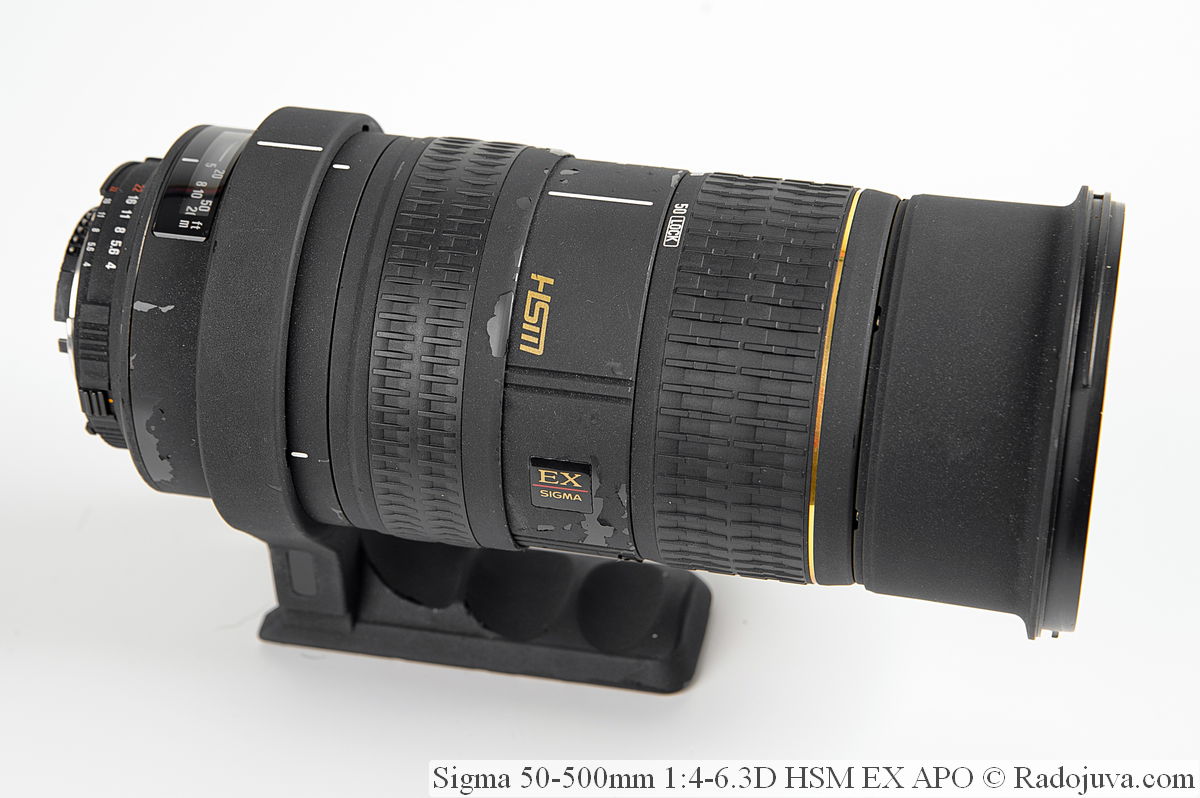
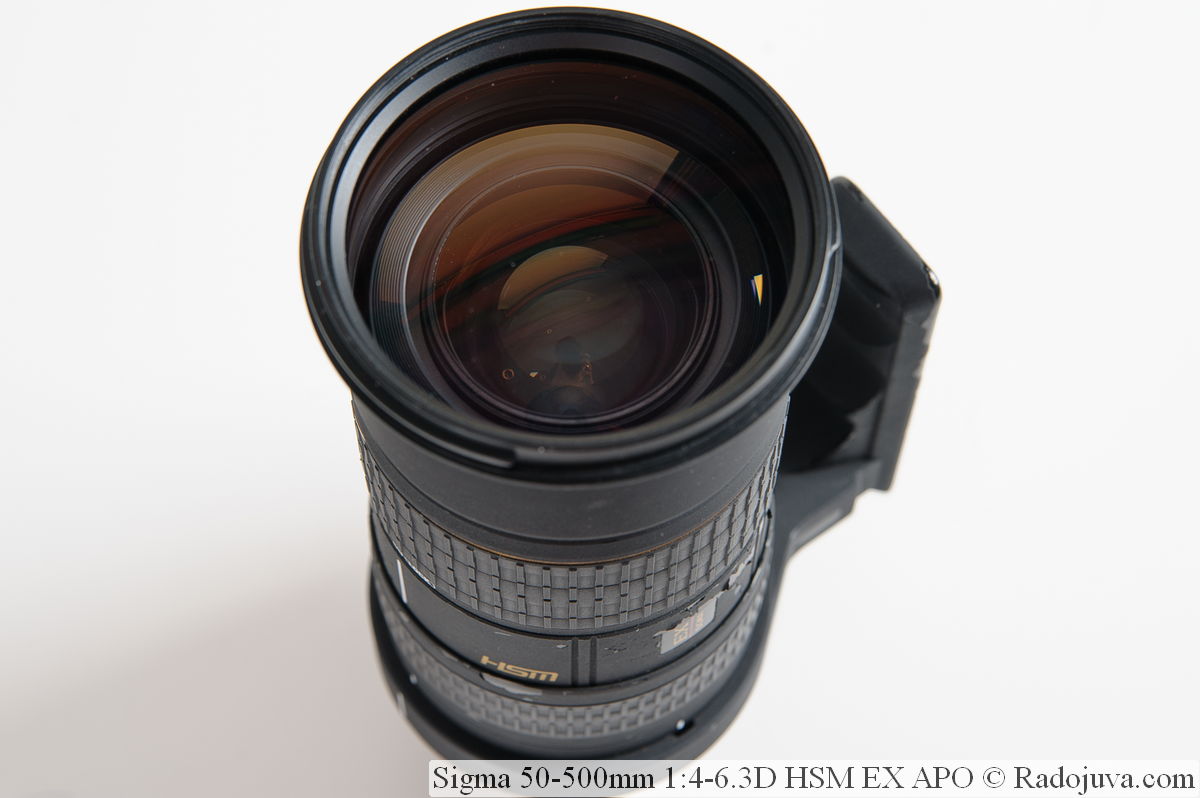
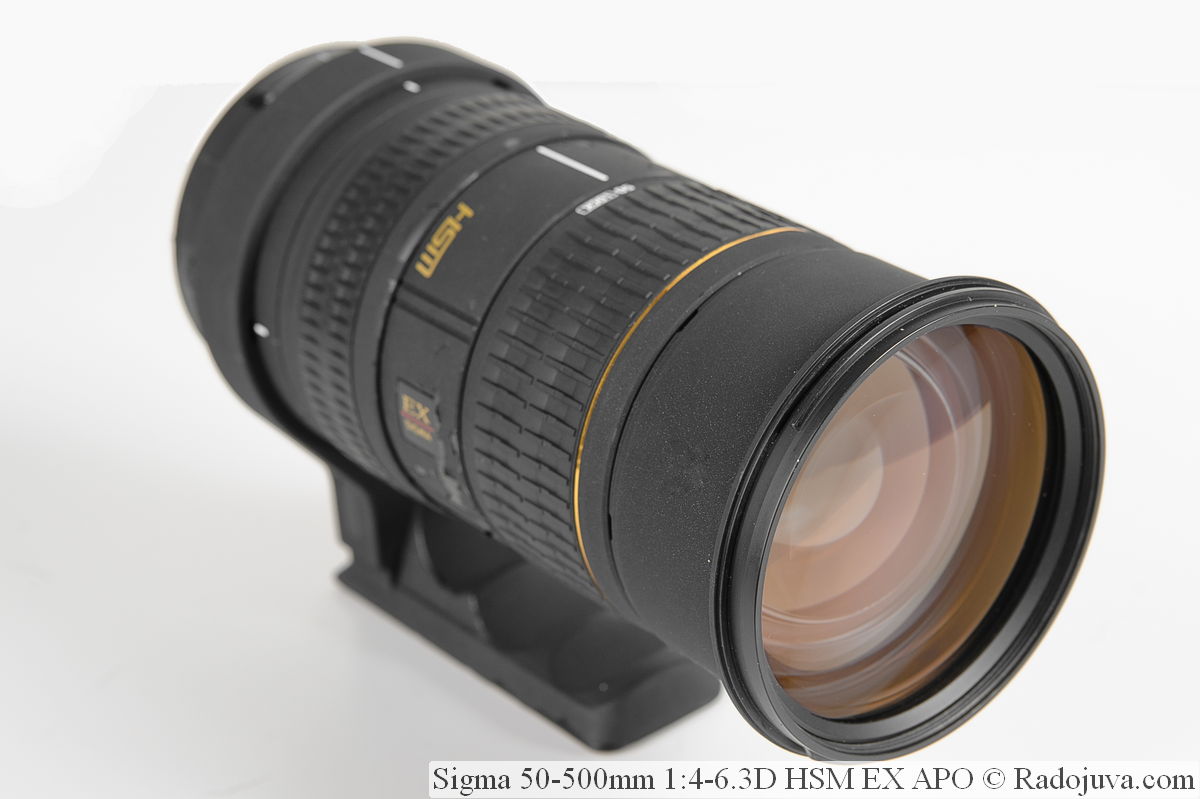
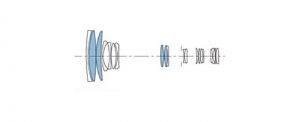
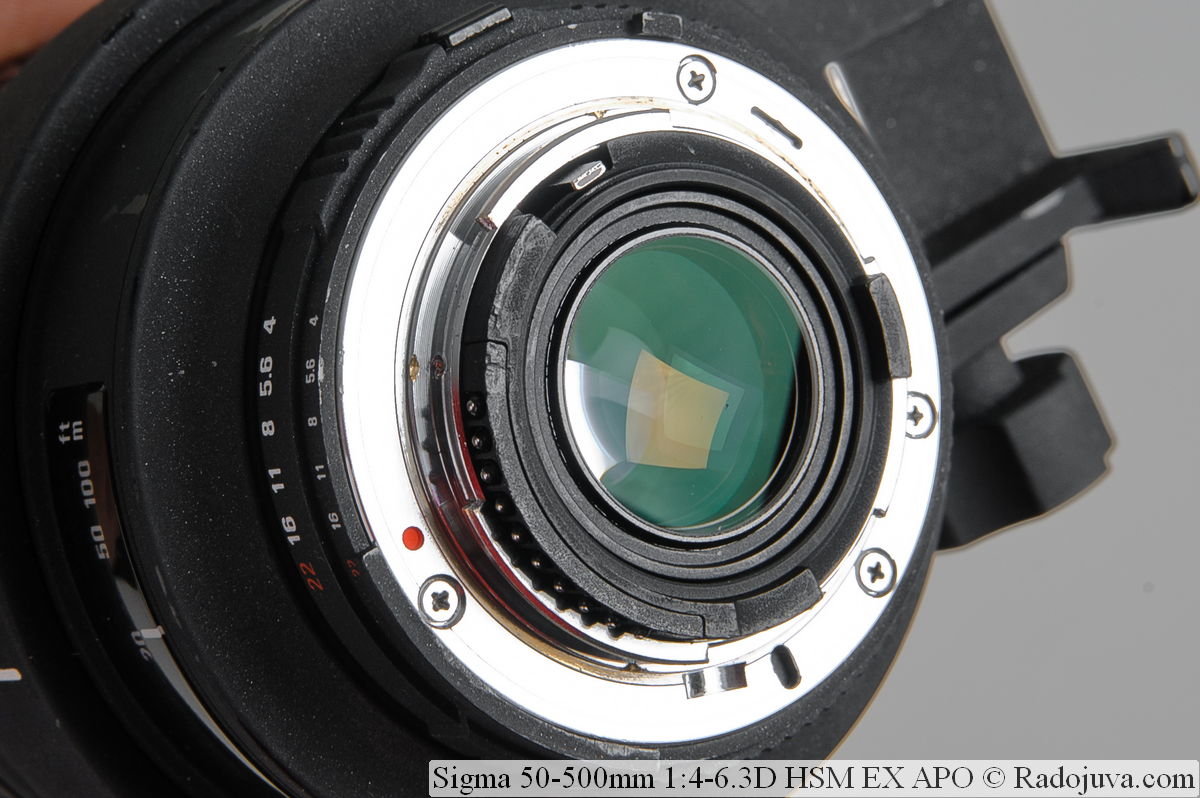
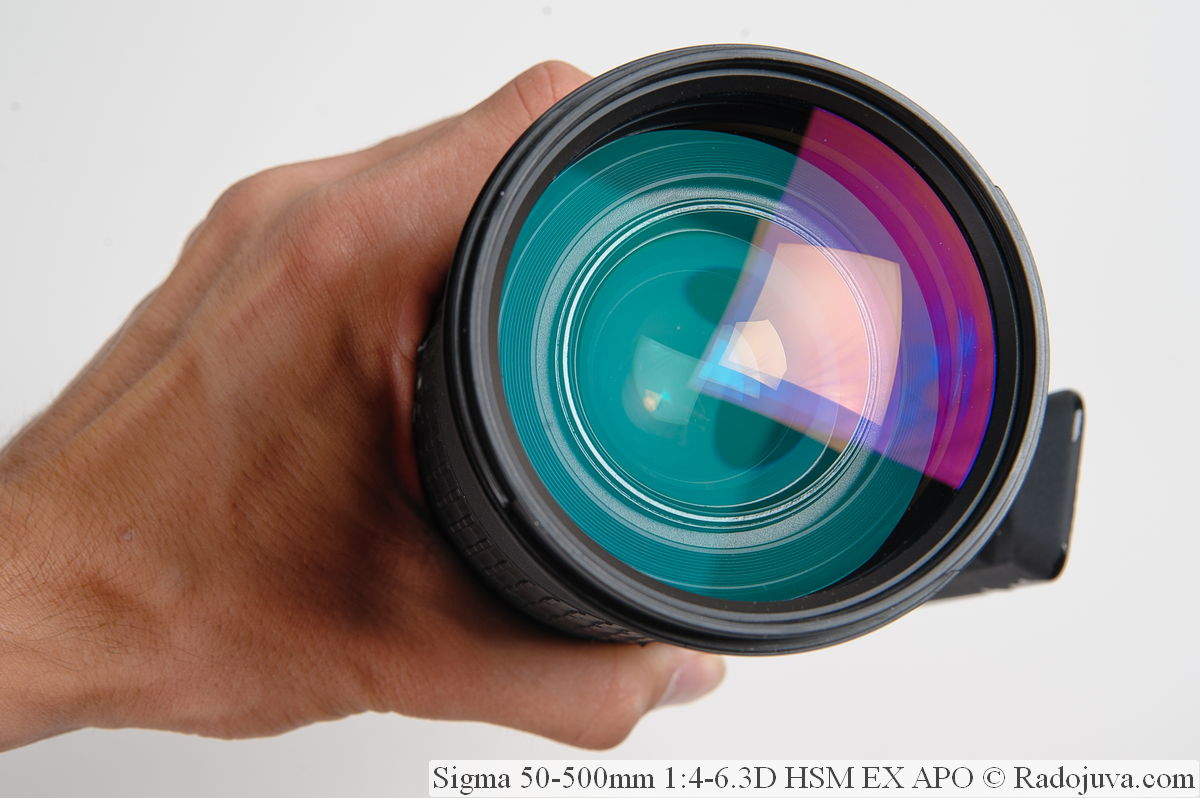
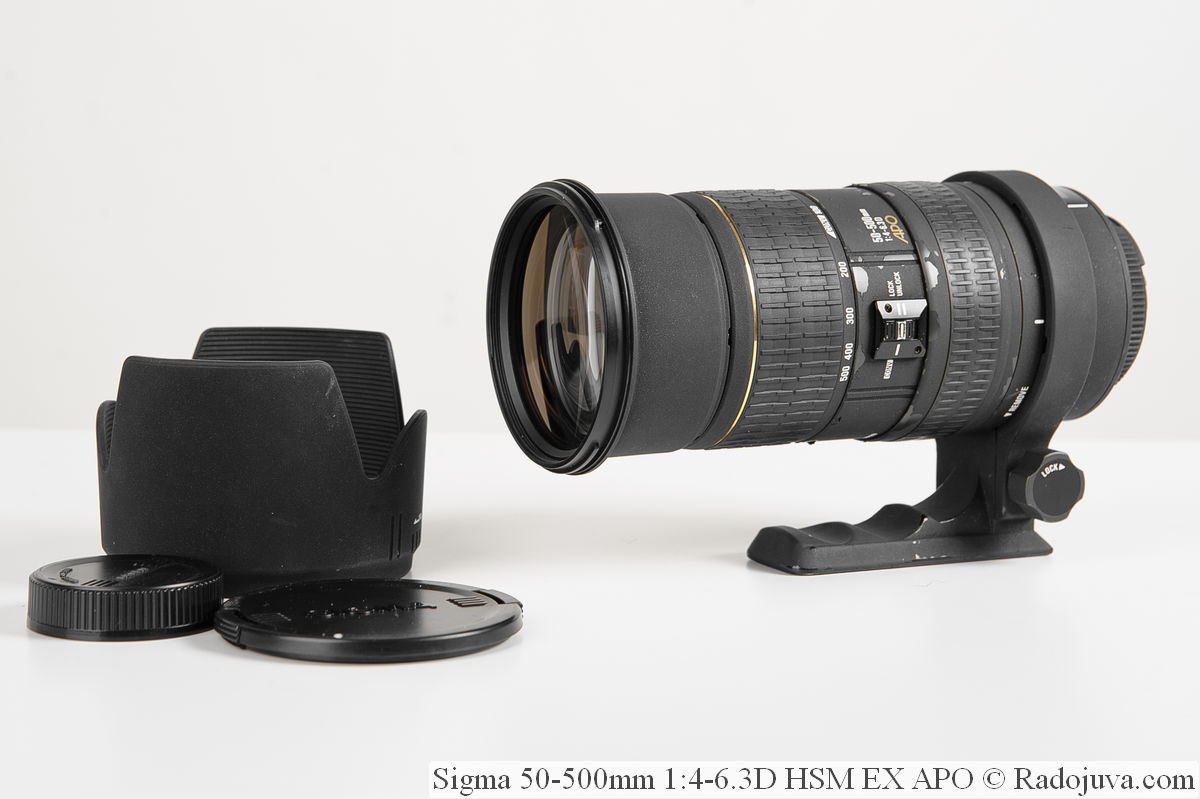
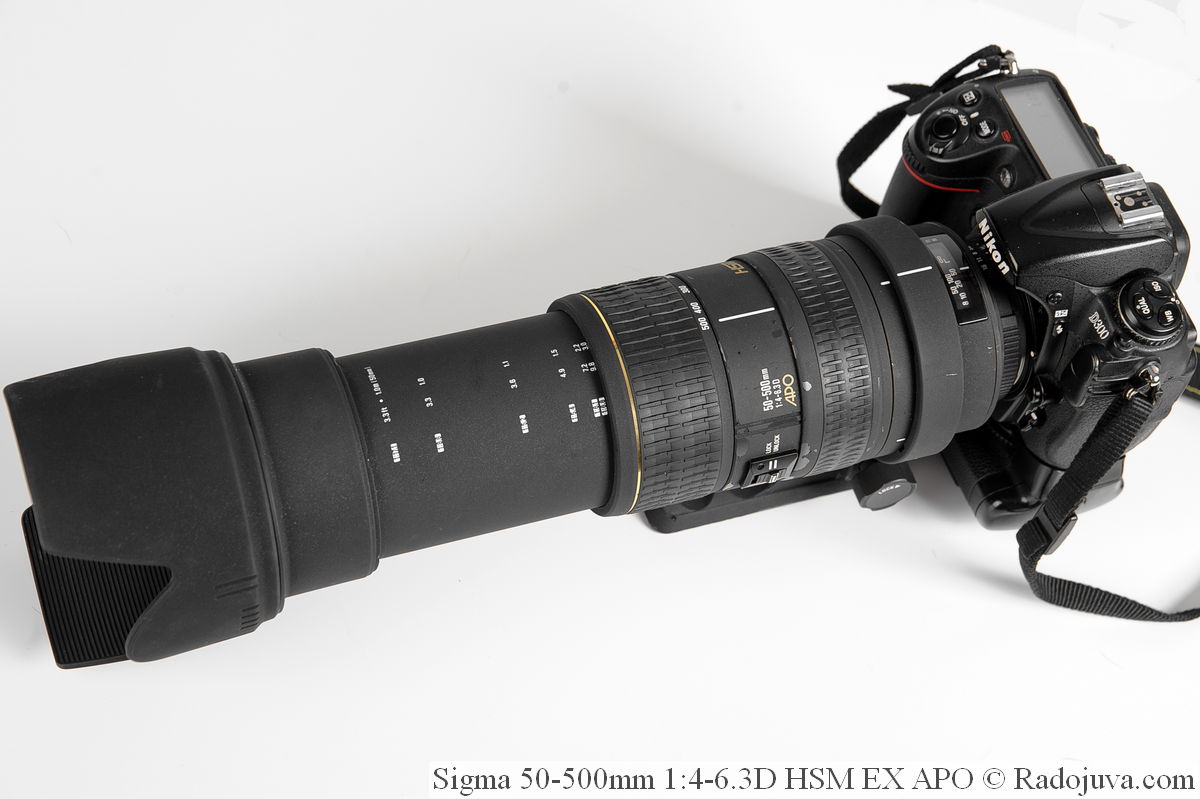













































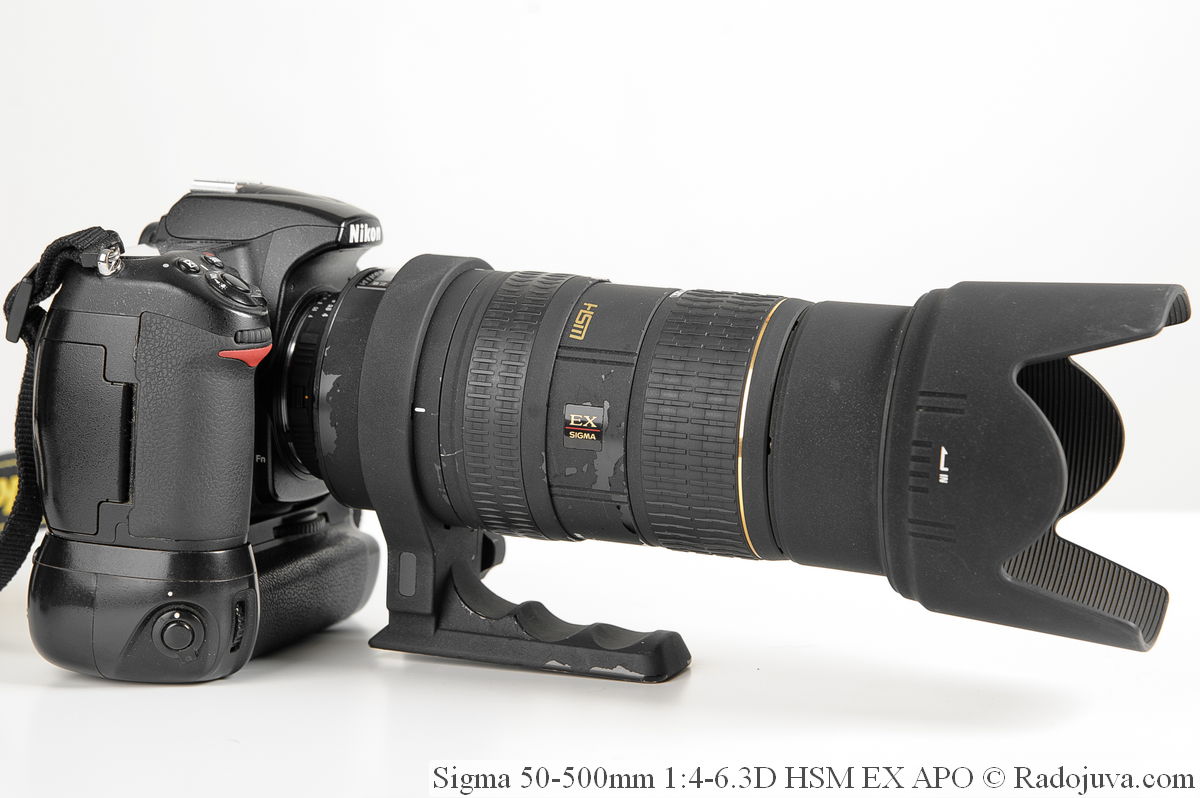
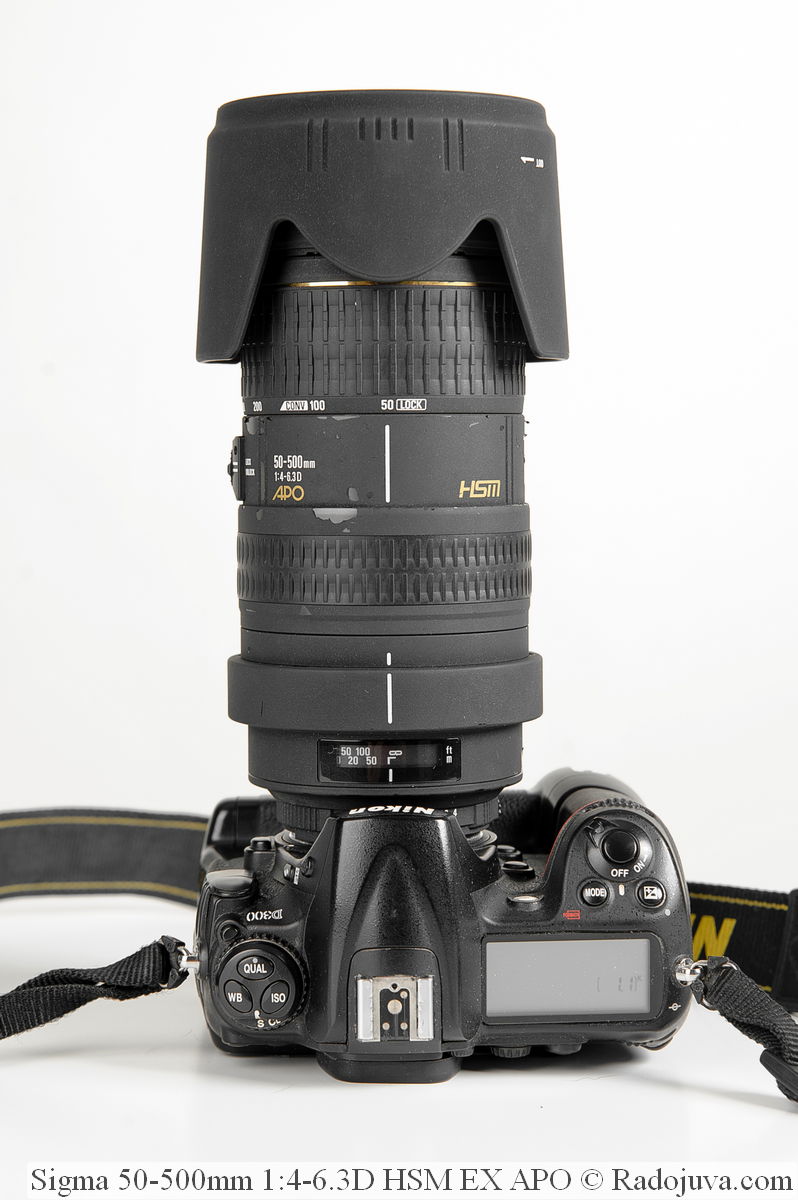

Great, good thing!
impressive aggregate)
Good, good photo examples
About a supernova like a joke?
Of course a joke.
Oooh finally a review! I have one! It is this old version - found for 15000 in a new state
Really my favorite glass. I really like his film little contrasting picture, the picture is lively life, as it were.
The maximum sharpness at 500mm gives on the F13-F16. It's not necessary about super short exposures, it's a matter of experience with such lenses. I calmly shoot from my hands without lubrication by 1/100. In general, you can completely eliminate micro-lubricants by shooting in jpeg S, and not in RAV
Please show a couple of shots at 1 / 100s and a long end, it will be great
Great review. At the expense of 1/100 and focal length 500 without blurring, I doubt
Cool! :) I've been looking at the Sigma family of 50-500mm lenses for a long time and I think. At one time, having tried the 28-300 from Canon, I was quite surprised by the image quality with such a range of focal lengths. It seems to be the same here. Given the low price, this is a great option for many situations. I've even read about weddings shooting 300-500mm portraits at weddings, so that glass can even be used for them. At 50mm on ff it is quite possible to shoot in a narrow room, and 500mm is enough even for very distant objects. Sometimes I think about replacing 150-500 with 50-500 for the sake of being able to shoot with such a range of focal lengths. The only thing that is annoying is that the old 50-500 does not have a stub. At 150-500, I can remove a fixed object at 500 mm with a stub and at 1/60. And without a stub, even at 1/1000, everything is not always good. There are 50-500 with a stub, but the price for it is inhumane today.
“Shooting at 300-500mm portraits at weddings” ……. Humor!
By the way, the results are quite interesting. True, not all people fit flattening on such focal points. But for some, it’s very opposite.
I’ll look for examples of photos on 1 \ 100 -1 \ 200 in the archive or re-photograph, lay out. This is an extreme case, but shooting without grease is really possible. It is very heavy, so the weight compensates for the lack of stub.
As for FF - my friend gave his DF to test it from the balcony. I didn't like it at all, the sharpness is worse than on the D7100 + monstrous vignette in the corners as if the lens was cropped by its nature
When will a self-made lens like RADIO 1,5 / 135 appear? By the way, how to cut glass with multi-enlightenment?
What is the humor?
It is not joke.
By the way, 135 1.4 has already been around for a long time, but now a new one has been released :)
more details please. The name of the lens. Yes, the Internet is in a stupor
http://petapixel.com/2015/10/19/mitakon-speedmaster-135mm-f1-4-2999-gets-you-the-worlds-fastest-135mm/
Well done Chinese. Good price good weight
Google, at "135 1.4", responds immediately, without even thinking
Come on, the new Mitakon Speedmaster 135mm f/1.4 is only $3000.
Well, maybe everything is relative
but it is not expensive. if we talk about otus)))
Otus - divine and out of reach
I shoot birds with such a lens in conjunction with Nikon D3, autofocus does not work well at the long end, therefore, with handles.http://m.vk.com/id180017700
Greetings, Arkady. The article, as always, is at its best. Small mistakes: To transfer the lens to the Manual focus mode on cameras with a focus motor; View focus distance and subject.
……buy a portable star to illuminate the scenes you shoot… — Please make a link to an article where more about this lighting fixture, and not a link to the wiki “what is a star”
It was humor :)
It was meant that a very bright additional light source would be required.
Can this lens and Nikon AF 80-200 2.8 be compared with a teleconvector? Which option would be preferable?
Arkady advise the AF-S zoom lens in exchange for 18-55 VR, so that the sharpness and picture are better. And then I can’t decide?
How about Nikon 17-55 / 2.8G or Nikon 16-80 / 2.8-4E?
Nikon 18-70
A comprehensive review.
Wow! Thanks!
500 dollars is a good price, but most of the ads on olkh for 20 thousand hryvnia go away. For 500 USD under Pentax only saw one ad. For portraits at such a price (under 20 pieces and above), there is no point in buying, given what high-aperture analogues can be taken. Purely for peeping or shooting wildlife from afar. Guys, of course, love to have a bigger unit (how much do you have, 200 ?, and I have 300, haha, and I have 500!), But using things is much more convenient if you use them for their intended purpose. By the way, if super quality is not important for spy photos, for 3-5 thousand UAH you can buy a used superzoom soap dish with ether under 1000 mm, or more expensive with ether under 2000 mm, but it is still much cheaper than even TOP 400 lenses. -500 mm. It is clear that if you want or need high-quality photos for work, then superzoom soap dishes will not work, but then again everything depends on the need and expediency.
As an example, everyone who buys powerful sports bikes for city driving is either masochists, or people who don't care about traffic rules, because it is impossible to comfortably ride such a motorcycle at the speed allowed in the city. But people buy and drive anyway, although there are much better options for city driving. It happens. Ponty and all that. Moreover, the police very rarely catch and fine violators of speed on sports bikes, why not drive them.
- I have been using Bigma 50-500 / 4,0-6,3 with a D600 camera for a long time, I bought in Alamat from my good fellow photographer, who sold me two lenses - this old Bigma for 350 dollars and an old Nikor 80-200 / 2,8, 450D for $ XNUMX - I have never met the price below.
I confirm that due to the fact that the lens with the camera is very heavy, you can use it at 500mm with a shutter speed of 1/500 and at the same time not get smears - when shooting at longer shutter speeds, you have to use the Photoshop plug-in “image stabilization”, because micro-smears become a thing the usual and even long-term skill of working with a medium format Pentacon camera in conjunction with a Zonar 180 / 2,8, which gives the skill to clearly hold a heavy camera in your hands, does not always allow you to avoid micro-smears.
Sometimes I think of a heavy Bigma selling and buying an 80-200 double converter for Nikor, but 500mm, there is 500mm, and Sigma's bokeh is not as aggressive as that of 80-200 and therefore I’m unlikely to be selling when, even despite the heavy weight.
Bigma is something like Big Mac?) Photoshop plug-in, and how does it treat greases? Aggressive bokeh in 80-200 2,8 - how's that ???
Thanks for the review! The photographs show really high quality of this lens! I wanted to shoot on such a lens in good light!
Hello Arkady. You described the 'D' option, and for which devices is the Sigma AF 50-500mm f \ 4,5-6,3 APO DG OS HSM F / NIKON suitable? I'm just getting started and I'm afraid to make mistakes. Can I use it with D3000. Thanks.
Can. Sigma HSM letters mean the presence of an integrated ultrasonic motor
Arkady, good afternoon! In your opinion, which will be better - sigma 50-500 or nikkor 70-300 4,5-5,6? I shoot mostly from a tripod - the absence of a stub in the sigma is not critical for me. I'm interested in image quality, in particular, such questions as
- at 300mm focal length which lens gives the best picture?
- Is it possible to achieve good sharpness at the long end of the sigma, fairly covering the diaphragm?
Thanks for the answer
recently acquired sigma AF 150-500mm f / 5-6.3 APO DG OS HSM for sonya-very pleased with the sharpness of the picture, almost no hr.aberr., tenacity of autofocus \ except for night scenes \. shot for 1 \ 60sec, leaning the lens against the pillar- excellent - sigma stabilizer or both \ steady shot on a77 did not turn off \ works what is needed. neither front nor back focus - I was lucky. tele-fixes more than 200mm did not have. 300mm \ 4.5-5.6 \ still did not satisfy - lubricants and smears. and this one works at 500mm !!!! On the secondary, from 23t.r, 50-500 with a stub is much more expensive. this lens is a bandura about 2kg, it is very inconvenient to focus manually, the trunk outweighs even a heavy a77. I think it will go and on a full frame well. If anyone is interested, I will send a couple of frames here.
interesting. especially 500mm open
switched to sony a7rii // on a7r it is very difficult to shoot without smears, there is no stabilization and the grunting of the shutter also affects the smears. in a7mark 2 I finally found everything I wanted, what was missing, even focus bracketing, though I still need to master- download the program from sony support / paid / and learn how to glue / helical fokus /. today I shot from a window of 400 x 500 mm by 1 / 40sec-happy // leaned against the frame true /. screw a handle from some old Soviet movie camera onto the lens , el4 / sonya-sonye / -takes something like a photographic gun and free into the “pampas” -won from a stone sack of St. Petersburg. Karelia has something to shoot and you can safely carry this bandura -in St. Petersburg they can easily kick a 75-year-old paparazzi in the head . in autumn I will send pictures / promised like /. with the Internet there is bad. often and not to get through. but there are no people, not crap yet, except perhaps with boars. sigma150-500. / I take pictures only in jpeg. when I got rid of canons I forgot the raw format - on-camera jpeg for sleepyheads is excellent in 95% of cases. you can pull up shadows and lights and everything else jpeg / acdsee 8.9. 10 /
a grip from an old movie camera - and a heavy sigma 180 f1.8 lens / as an example /
I dreamed, I bought 50-500 only with a stabilizer. Took for shooting wild animals and birds. After a month I was completely disappointed. Good at close shooting distances. Further 100 meters just nowhere - soap. At first he sinned on warm air currents ... But different weather conditions gave a similar disgusting result. I thought it was my unsuccessful copy. I asked a colleague from another city to do tests on his lens. The result is one to one. With my not-so-bad Canon Mark III, the picture is not very long. I repeat, maybe I was just unlucky with the specimen, but this lens is not suitable for serious work.
Well Duc, yes she is. There are plenty of examples on the net. We should take 120-400, or better a more modern contemporary
The tape was still back and forth. In general, the 10x zoom is clearly not for birds. More reporter (type 35-350, 28-300).
Damn, I thought that the “portable star” was some kind of device :D